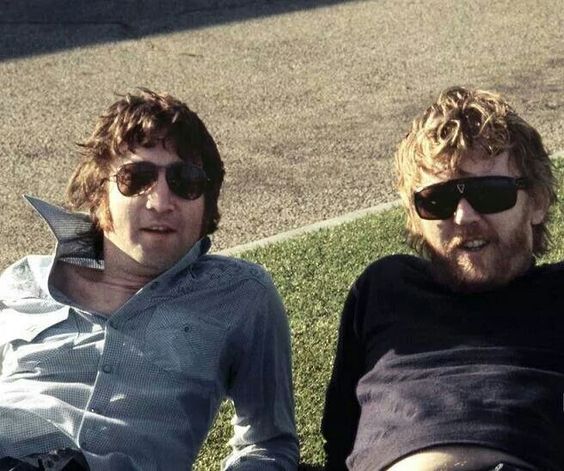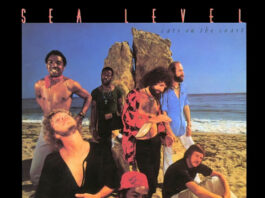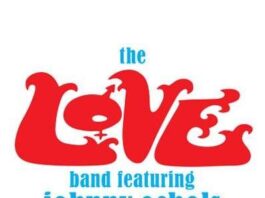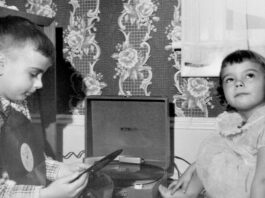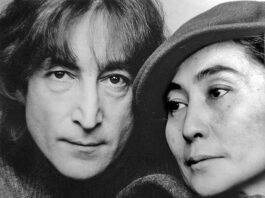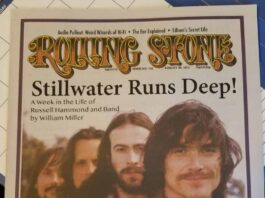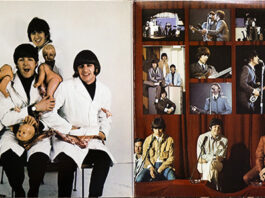It’s an honor to share this feature about singer and songwriter Harry Nilsson and his friendship with John Lennon written by Grammy-nominated music journalist and longtime friend and co-conspirator Barry Alfonso. — SKP
* * * * *
The following piece is taken from an interview I did with Harry Nilsson no more than a week after his friend John Lennon was murdered on December 8, 1980. It was published in the January-February 1981 issue of Songwriter magazine.
 I had met Nilsson in mid-1980 and got to know him a bit. We went bar-hopping in his limo and spent time at his Bel Air mansion, where I got a taste of his droll wit and knack for telling a good story as well as a sense of his melancholy.
I had met Nilsson in mid-1980 and got to know him a bit. We went bar-hopping in his limo and spent time at his Bel Air mansion, where I got a taste of his droll wit and knack for telling a good story as well as a sense of his melancholy.
Nilsson was battling addiction issues at the time Lennon was killed – John’s death affected him deeply. As you will read, he was inspired to fight for gun control legislation as a result of this tragedy (a battle that has continued long after Harry’s own passing in 1994).
Reading this interview again after quite a few years, I am struck by Nilsson’s honesty as well as his insights into Lennon’s personality and talent. Nilsson and Lennon were both remarkable artists who achieved great successes in spite (or maybe because of) their inner demons.
I like what Harry said about John’s credo: “Follow through, finish what you start.” Hopefully, I am furthering something positive by dusting off Harry’s words 40 years later.
— Barry Alfonso, December 8, 2020
* * * * *
“I met John after [Beatles publicist] Derek Taylor played my first album for him – this was about 1968. Derek called me and asked if I wanted to come over to England and go to a session.
“I was met at the airport by Ringo’s car and went to Apple, said hello to Derek and was chauffeured to where John lived, which is now, I think, Ringo’s house. I spent the weekend with John at his house. It was the weekend that Cynthia [Lennon’s first wife] moved out and Yoko moved in.
“We spent the night talking about divorce and all that stuff. 12 hours nonstop – he was like that, always hyper. John wasn’t a very relaxed guy. He was always manic – ‘Let’s go, let’s do it.’ An all or nothing person, as far as I knew him.

“We were roommates later for a time, sort of like the Odd Couple. That was in ’75 or so. For a month and a half, a whole bunch of us lived in this beach house in Malibu [actually Santa Monica, at 625 Palisades Beach Road aka Pacific Coast Highway]. John, Ringo, Keith Moon, Mal Evans and I were there.
“After that, John and I went to New York and we lived in a hotel room at the Pierre for another month and a half.
“I consider myself his closest friend during that period when he was away from Yoko. When he needed a friend, I was there. I took a lot of the blame for getting him drunk and all that, but I didn’t force foul-tasting liquids down his throat. That was his own doing.

“I can tell you this – when we were doing the ‘Pussy Cats’ album, we were all getting nutso. It was the height of something, the peak of rock ‘n’ roll madness. We could do anything we wanted to do, but people didn’t exactly know what to do with that kind of freedom. During that period, Keith and John and Ringo and myself were all out there getting crazy. It was a destructive period that everyone went through, and because everyone was doing it, everyone thought it was the thing to do.

“When John and I decided to do that album, we started off on the same foot: ‘Let’s make an album and get loaded along the way.’ At one session, I remember counting just the drums, and between Ringo and Jim Keltner and Keith Moon playing on, I think, ‘Rock Around the Clock,’ there were 24 drums. We’d finish the session, go back to Malibu, and get out of our minds on amyl nitrate, acid, coke, grass, liquor, the works.
“And then, at one point, when it got too crazy and I lost my chops and people were sleeping on pool tables, John went ‘click,’ like that, turned off, and became the leader of the band. He straightened up and he was great. He did his job, we were working very well – then it became a race to get the album finished in a month or two. But we did, and he did a good job. He became the responsible person and was a tremendously creative producer.

“In fact, he was the only other guy other than myself who tried to get things out of the engineer. He worked with the engineer, rather than telling him what to do or letting him do it by himself. He encouraged the guy – I loved that. So, in other words, he was a creative producer, was productive, and got a lot of work done in a short time. He’d wake up in the morning five minutes before you would and he’d be shining your shoes. I’m serious, literally shining your shoes, really manic. If he was getting drunk, he would really get drunk, and if he was getting sober he was really getting sober.
 “I know we learned things from each other. We did agree on songs. We shared the opinion that it took a little bit of this and that, a little salt and pepper, a word here and there to make you laugh, to make a song. That’s the attitude I still take when writing, and that was the attitude he showed me by his own songwriting.
“I know we learned things from each other. We did agree on songs. We shared the opinion that it took a little bit of this and that, a little salt and pepper, a word here and there to make you laugh, to make a song. That’s the attitude I still take when writing, and that was the attitude he showed me by his own songwriting.
“I remember working on a song we did together, ‘Old Dirt Road’ [found on Lennon’s “Walls and Bridges” and Nilsson’s “Flash Harry” LPs]. He had this bit of a song and an idea, we were in the studio, and I went to the piano and finished it. I came over to him with a page of lyrics and asked him when he thought of them. He said, ‘You’re flying, go with it.’ That was his attitude.
“The most important thing I learned from him was to follow through, to finish what you start. If you say you’re going to send someone a postcard, send a postcard. He always followed through.
“I was talking to my wife the other day about his work. She asked me, ‘What was it that he did?’ I said that I really didn’t know. If you look at the words of his songs, occasionally there’s a clever line, but they don’t look very good on paper.
“His melodies were probably more important than his words, yet he was known for his words. A lot of his melodies were like child melodies. I do think he was a great singer, though I don’t know that he had a great range. When you put the words and the melodies and his singing together, there was this thing that happened, that synergy.
“I really couldn’t explain it to my wife any more than I can explain it to you. But there it was. Basically, I’d say what made him great was brains and a sense of humor, with heart thrown in.
“Everyone’s going to miss John. You keep saying, ‘No more wit from John, no more anticipation of what he’s going to do next – Christ, he’s gone.’ That makes me angry more than sad.
“We all know what John did, and we all know about [his killer], unfortunately. Now, do we all know what we’re going to do about it? I want to know what we are going to do about handguns.
“The answer isn’t registration – the answer is to stop the manufacture and distribution of them. The only way to do it is through power, which comes out of signatures and money.
“I want to put an ad in TV Guide about it, put John Lennon’s name on it, and say, ‘If you care, send in this coupon.’ I’ve had offers of help – Publisher Lester Sill [of Screen Gems] has offered to let me use his office. There are people in record companies who have offered to put up money, artists who are willing to do concerts to help pay for ads. Reminiscing isn’t important, but this is.”

Barry Alfonso is a writer residing in Pittsburgh. Among other credits, he earned a No. 1 record for his song “In Between Dances” (recorded by Pam Tillis in 1995) and received a 2004 Grammy nomination for the liner notes to the Peter, Paul & Mary box set “Carry It On.” His books include “A Voice of the Warm: The Life of Rod McKuen” (Backbeat, 2019).
Article: Harry Nilsson: Remembering His Friend John Lennon (December 1980)
Author: Barry Alfonso
Category: News and Reviews
Article Source: StephenKPeeples.com

